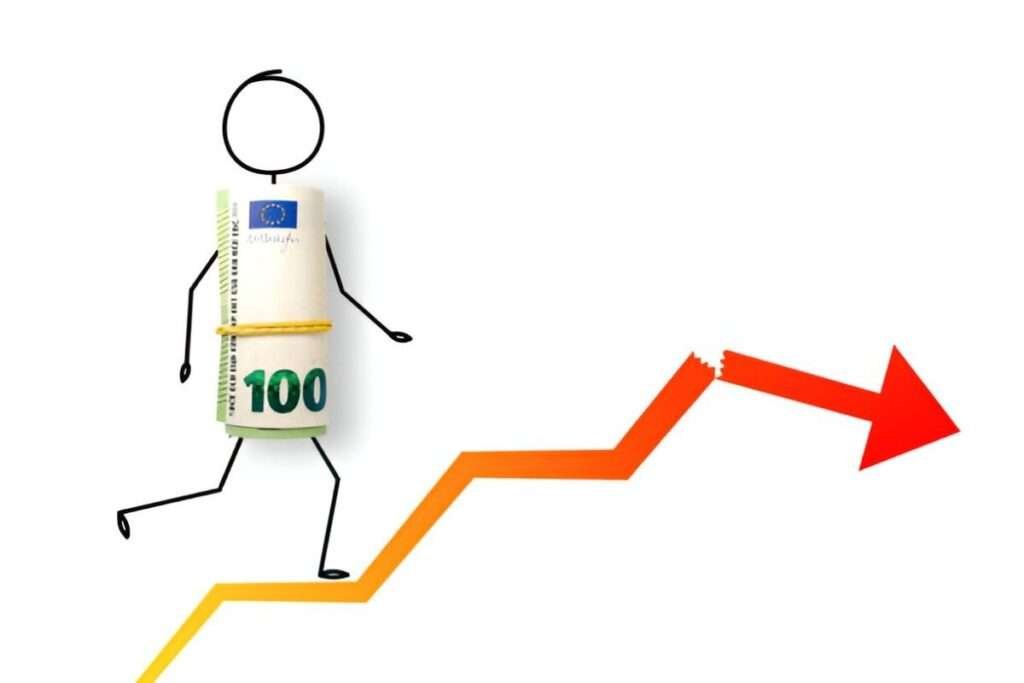Forex trading can seem complex, but with the right strategies, it’s possible to gain an edge in the market. One such strategy is the 1-2-3-4 Forex reversal trading strategy. In this article, I will walk you through how to understand and implement this strategy effectively. By the end, you’ll have a solid grasp of the mechanics behind it and how it can be a part of your overall trading approach.
Table of Contents
What is the 1-2-3-4 Forex Reversal Trading Strategy?
The 1-2-3-4 strategy is a simple yet powerful tool used by traders to identify potential market reversals. It’s designed to help traders spot when a prevailing trend is losing strength and when the market may be about to turn in the opposite direction. The strategy derives its name from the four key points on a price chart: 1, 2, 3, and 4. These points are used to confirm a reversal and set up a trade.
Point 1: Market High or Low
The first point in the 1-2-3-4 strategy is where the market reaches a high or low. This point signifies that the market is either overbought or oversold, and a potential reversal could be on the horizon.
Point 2: Price Retracement
The second point represents a retracement or pullback from the high or low identified in Point 1. Traders will observe this point for confirmation that the market is indeed losing momentum.
Point 3: Break of Previous Low or High
Point 3 is crucial because it signals whether the market is truly reversing. If the price breaks the previous low or high, it shows that the trend is losing strength and a reversal is likely.
Point 4: Confirmation of the Reversal
The fourth point marks the final confirmation that the market has reversed direction. This point typically occurs after a retracement and is seen when the price starts to move in the opposite direction of the original trend.
By understanding these four points, traders can effectively plan their entries and exits, minimizing risk while maximizing potential gains.
The Mechanics of the 1-2-3-4 Strategy
Now that we’ve established the four key points, let’s dive deeper into how the 1-2-3-4 strategy works in practice. The strategy is primarily used to trade reversals, so understanding trend lines, support, and resistance levels is essential.
To better illustrate, let’s say we are working with the EUR/USD currency pair. The following steps will guide you through the process of implementing the strategy:
- Point 1: Market High or Low
The first step involves identifying a peak (high) or trough (low) on the chart. For instance, if the EUR/USD has been trending upwards and suddenly peaks, you identify this as Point 1. You will look for evidence of overbought conditions using indicators such as the Relative Strength Index (RSI) or Bollinger Bands. - Point 2: Price Retracement
After identifying Point 1, the price typically retraces (pulls back) to a lower level. The key here is that the retracement does not go below (or above, if the trend is downward) the previous low (or high). The pullback could be 38.2%, 50%, or 61.8% of the initial price move, which are Fibonacci levels frequently used by traders. - Point 3: Break of Previous Low or High
At this stage, you need to see the price break below the previous low (in a downtrend) or above the previous high (in an uptrend). The break signifies that the trend is indeed weakening, and the market may be preparing for a reversal. - Point 4: Confirmation of the Reversal
Once Point 3 is established, traders wait for the price to move in the opposite direction with confirmation. For example, if we were in an uptrend and the price broke lower at Point 3, we would look for signs of a shift in momentum. This could include a candle pattern such as an engulfing candle, or it could be confirmation through a technical indicator like the Moving Average Convergence Divergence (MACD).
How to Use the Strategy for Trading
Using the 1-2-3-4 strategy is about patience and discipline. It requires you to wait for the market to develop certain conditions before entering a trade. Below is a step-by-step guide for using the strategy in a real trading scenario.
Step 1: Identify a Trend
Before applying the 1-2-3-4 strategy, you need to identify the current market trend. Is the market in an uptrend or a downtrend? It’s essential to understand the broader market context. Use trend indicators like moving averages or trend lines to determine the overall direction of the market.
Step 2: Wait for Point 1
Once the trend is established, you must wait for the market to reach an extreme – either a high (in an uptrend) or a low (in a downtrend). At this stage, the market should be showing signs of exhaustion.
Step 3: Look for the Retracement to Point 2
After the extreme is reached, wait for a retracement. The retracement is crucial because it provides an entry point for a reversal trade. The price should not break beyond a certain point in the opposite direction, as this would invalidate the potential reversal.
Step 4: Confirm Point 3
At this stage, you’ll wait for a breakout of the previous low or high. This point confirms that the market is indeed reversing. If the market breaks the previous support (in a downtrend) or resistance (in an uptrend), it signals a trend reversal.
Step 5: Enter the Trade at Point 4
Finally, after Point 3 is established, you wait for confirmation. This confirmation could be through a candlestick pattern or another technical indicator. Once you have confirmation, you enter the trade in the opposite direction of the original trend.
Example Trade
Let’s work through an example using the EUR/USD currency pair. Imagine the market has been trending upwards, and you identify the following:
- Point 1: The price reaches a high at 1.2000, indicating an overbought condition.
- Point 2: The price then retraces to 1.1900 (50% Fibonacci retracement of the original move).
- Point 3: The price breaks below the previous low of 1.1900, confirming the reversal.
- Point 4: The price begins to show signs of a downtrend, and you enter the trade at 1.1880, targeting 1.1700.
In this case, you would use a stop loss just above 1.1900 to protect your position and target the 1.1700 level as your profit.
Risk Management and Position Sizing
No trading strategy is foolproof, and the 1-2-3-4 reversal strategy is no different. Therefore, it’s essential to apply risk management principles to your trades. Here are some tips:
- Stop-Loss Placement: Always place a stop loss above the previous high (in a downtrend) or below the previous low (in an uptrend) to minimize your risk.
- Position Sizing: Never risk more than 2% of your trading capital on a single trade. If your account balance is $10,000, you should risk no more than $200 per trade.
- Risk-to-Reward Ratio: Aim for a minimum risk-to-reward ratio of 1:2, meaning your potential profit should be at least twice the amount of risk you’re taking.
Using Indicators for Confirmation
While the 1-2-3-4 strategy is powerful on its own, many traders enhance it with additional technical indicators. Some useful indicators include:
- Relative Strength Index (RSI): Helps identify overbought or oversold conditions, assisting in confirming Points 1 and 2.
- Moving Averages: Can help confirm the overall trend and assist in identifying retracements.
- MACD: This momentum indicator is useful for confirming trend shifts and identifying reversals at Points 3 and 4.
Conclusion
The 1-2-3-4 Forex reversal trading strategy is a straightforward yet highly effective method for identifying market reversals. By patiently waiting for the right conditions to align, traders can enter trades with confidence and reduce the risk of losses.
If you are new to forex trading or simply looking to refine your strategies, the 1-2-3-4 strategy offers a clear and concise framework to trade potential reversals. It combines technical analysis, risk management, and patience, all of which are critical to successful forex trading. By carefully following the steps outlined and using proper risk management, you can start applying this strategy to your trading plan and potentially improve your results.





